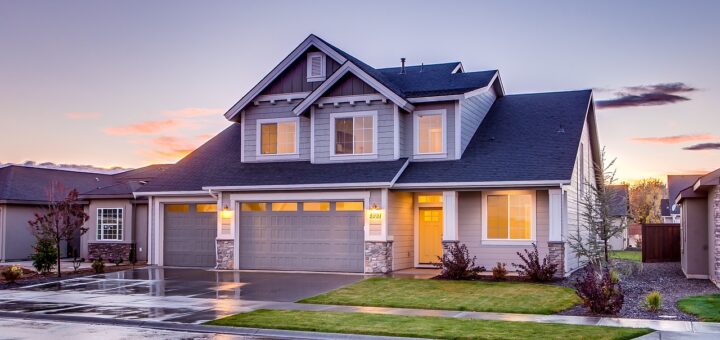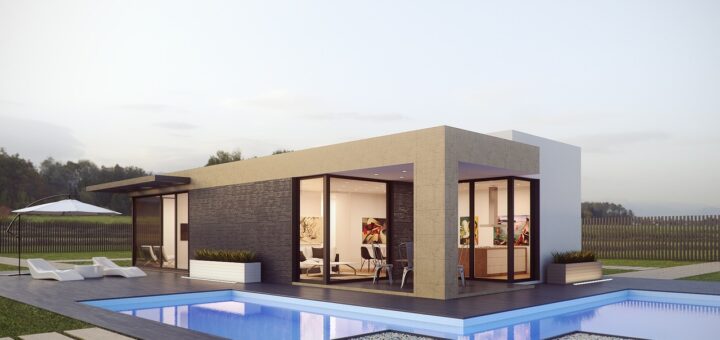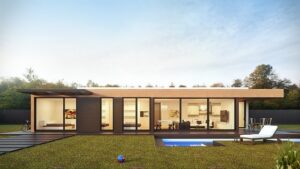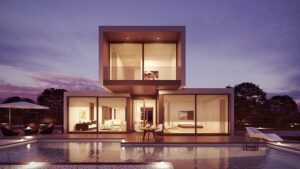Prefab House vs. Architect-Designed House: Comparing the Costs
Are you dreaming of a new home? The choice between a prefab house and an architect-designed house can feel overwhelming. In an insightful post at HOUZZ, we learned that both options have unique appeal, but they also come with distinct costs. Whether you’re drawn to the sleek efficiency of prefabricated homes or the bespoke charm of custom designs, understanding the financial implications is crucial. So why not discuss the cost comparison between these two types of houses together?
Initial Construction Costs
 When considering initial construction costs, prefab houses often shine as a budget-friendly option. They are manufactured in controlled environments, reducing labor expenses and minimizing waste. This streamlined process can lead to significant savings. On the other hand, architect-designed homes typically come with higher upfront costs. Customization requires skilled labor and unique materials, which drive up the price tag. Each design element adds to the overall expense. However, it’s essential to look beyond just the numbers when evaluating these options.
When considering initial construction costs, prefab houses often shine as a budget-friendly option. They are manufactured in controlled environments, reducing labor expenses and minimizing waste. This streamlined process can lead to significant savings. On the other hand, architect-designed homes typically come with higher upfront costs. Customization requires skilled labor and unique materials, which drive up the price tag. Each design element adds to the overall expense. However, it’s essential to look beyond just the numbers when evaluating these options.
While an architect-designed house may cost more initially, it could offer features that translate into long-term value. For those on tighter budgets or seeking quicker solutions, prefabs present a compelling choice without compromising quality entirely.
Design and Customization
Now, let’s move on to the design and customization. Prefab houses offer a streamlined approach. Buyers often select from a range of pre-designed models, which can definitely save time and reduce stress during the building process. On the flip side, architect-designed homes provide boundless creativity. Homeowners collaborate closely with architects to create unique layouts that reflect personal tastes and lifestyle needs. Each detail can be tailored—from room sizes to exterior finishes. But let me tell you. This level of customization usually comes at a higher price point. Custom designs require more planning, which translates into additional costs for both labor and materials. Prefab options may limit individual flair but can still accommodate some modifications within their framework.
Construction Time
Prefab houses are built in factories and transported to the site, meaning a more streamlined process and quicker assembly. Architect-designed houses, however, tend to follow a different schedule. Each custom design requires detailed planning and coordination with contractors, which can lengthen the timeline significantly. Weather delays also play a role in traditional builds, extending wait times beyond initial estimates. Prefab options are less affected by these external factors since much of their construction occurs indoors. If speed is critical for your housing needs, prefab may be the better choice.
Quality of Materials
When it comes to quality, prefab houses often use standardized materials. These can be durable and reliable but sometimes lack the unique touch found in custom builds. The focus is on efficiency, which may impact aesthetics. On the other hand, architect-designed homes allow for a personalized selection of materials. Homeowners can choose high-end finishes, sustainable options, or even locally sourced products. This flexibility often results in a more bespoke feel. However, this choice comes with added costs. Customization can drive up expenses significantly depending on what you select.
Long-Term Value
 When considering the long-term value of prefab houses versus architect-designed homes, several factors come into play. Prefab houses often offer a quicker return on investment due to their lower initial costs and faster construction timelines. This can be typically appealing for first-time buyers or those looking to minimize financial risk. …
When considering the long-term value of prefab houses versus architect-designed homes, several factors come into play. Prefab houses often offer a quicker return on investment due to their lower initial costs and faster construction timelines. This can be typically appealing for first-time buyers or those looking to minimize financial risk. …




 One of the initial hidden costs associated with prefab homes is site preparation. Before your prefab home can be installed, the building site needs to be adequately prepared. This includes clearing the land, leveling the foundation, and connecting utilities. Site preparation costs can vary significantly based on the land’s condition and the site’s location. It’s essential to carefully consider these costs and budget accordingly before purchasing a prefab home.
One of the initial hidden costs associated with prefab homes is site preparation. Before your prefab home can be installed, the building site needs to be adequately prepared. This includes clearing the land, leveling the foundation, and connecting utilities. Site preparation costs can vary significantly based on the land’s condition and the site’s location. It’s essential to carefully consider these costs and budget accordingly before purchasing a prefab home. To ensure a smooth and budget-friendly experience with your prefab
To ensure a smooth and budget-friendly experience with your prefab 